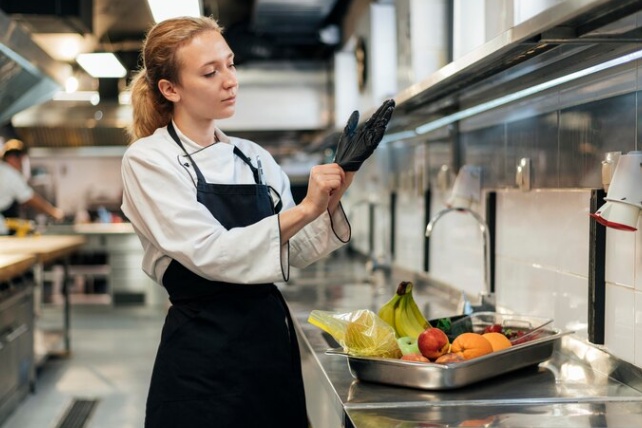Introduction:
In the bustling world of commercial kitchens, where the symphony of sizzling pans and chopping knives creates a culinary masterpiece, the restaurant hood system stands as a silent guardian, ensuring a harmonious and safe environment. In this in-depth exploration, we will delve into the intricacies of restaurant hood systems, examining their critical role, components, and maintenance practices, without referencing any specific company names.
I. The Essence of Restaurant Hood Systems:
A. Functionality and Purpose: The restaurant hood system, often overlooked amid the hustle and bustle of a kitchen, serves a crucial purpose. It acts as the lungs of the kitchen, extracting heat, smoke, and airborne contaminants produced during cooking.
B. Compliance with Safety Regulations: Beyond enhancing kitchen functionality, restaurant hood systems are mandated by safety regulations. Compliance with local and international codes ensures the well-being of kitchen staff and patrons.
II. Components of a Restaurant Hood System:
A. Hood and Canopy:
-
Extraction Point: The hood, positioned over cooking equipment, captures airborne particles and directs them towards the ventilation system.
-
Canopy Design: Canopy design varies, with considerations for the type and volume of cooking. It plays a crucial role in effective extraction.
B. Filters:
-
Types of Filters: Baffle filters, mesh filters, and charcoal filters are common options, each designed to trap specific particles and odors.
-
Regular Cleaning: Routine cleaning is essential to maintain filter efficiency and prevent fire hazards.
C. Ductwork:
-
Transit Route: Ductwork carries extracted air from the hood to the exterior of the building. The path and material of the ductwork are critical considerations.
-
Inspection and Maintenance: Regular inspection ensures that ducts remain free of obstructions, preventing potential fire hazards.
D. Exhaust Fan:
-
Fan Placement: Exhaust fans create the necessary airflow to move contaminants through the hood and ductwork.
-
Sizing Considerations: Proper sizing of the exhaust fan is crucial for maintaining optimal air balance in the kitchen.
III. Navigating the Types of Restaurant Hood Systems:
A. Type I vs. Type II Hoods:
-
Type I: Designed for capturing grease-laden vapors produced by cooking processes involving grease or oil.
-
Type II: Intended for capturing heat and steam generated by non-grease-producing appliances.
B. Ventless Hoods:
-
Technology Overview: Ventless hood systems use filters and other technologies to eliminate contaminants without ductwork.
-
Applicability: Suitable for kitchens where traditional ducted systems are challenging to install.
IV. Designing an Efficient and Effective System:
A. Matching Capacity to Cooking Equipment:
-
Assess the cooking equipment in your kitchen to determine the required hood system capacity.
-
Overestimating or underestimating capacity can lead to inefficiencies or inadequate ventilation.
B. Balancing Airflow:
-
Ensure proper airflow balance between supply and exhaust to maintain a comfortable and safe kitchen environment.
-
Imbalances can result in drafts, compromised capture efficiency, and increased energy consumption.
V. Maintenance Practices for Longevity and Safety:
A. Regular Cleaning Schedule:
-
Develop a cleaning schedule for filters, hoods, and ductwork.
-
Regular cleaning prevents the buildup of grease, which can pose a fire hazard.
B. Inspections and Testing:
-
Conduct routine inspections to identify and address issues promptly.
-
Testing the system periodically ensures that it meets performance standards.
VI. Regulatory Compliance and Inspection:
A. NFPA Standards:
-
Familiarize yourself with the National Fire Protection Association (NFPA) standards relevant to restaurant hood systems.
-
Compliance is crucial for ensuring the safety of your kitchen staff and patrons.
B. Local Building Codes:
-
Stay informed about local building codes and health department regulations.
-
Adhering to these codes is essential for obtaining necessary permits and maintaining a safe kitchen environment.
VII. Troubleshooting Common Issues:
A. Inadequate Ventilation:
-
Assess the capacity of your hood system to ensure it matches the cooking equipment.
-
Consider upgrading the system if ventilation issues persist.
B. Unpleasant Odors:
-
Evaluate the condition of filters and replace them if necessary.
-
Regular cleaning of the hood and ductwork can eliminate lingering odors.
VIII. Conclusion:
The restaurant hood system is the unsung hero of every kitchen, silently ensuring the safety, functionality, and cleanliness of the culinary workspace. By understanding its components, adhering to maintenance practices, and navigating regulatory landscapes, you can master the art of restaurant hood systems. Remember, a well-designed and properly maintained hood system not only enhances the kitchen's efficiency but also contributes to a safer and more enjoyable dining experience for all.


No comments yet